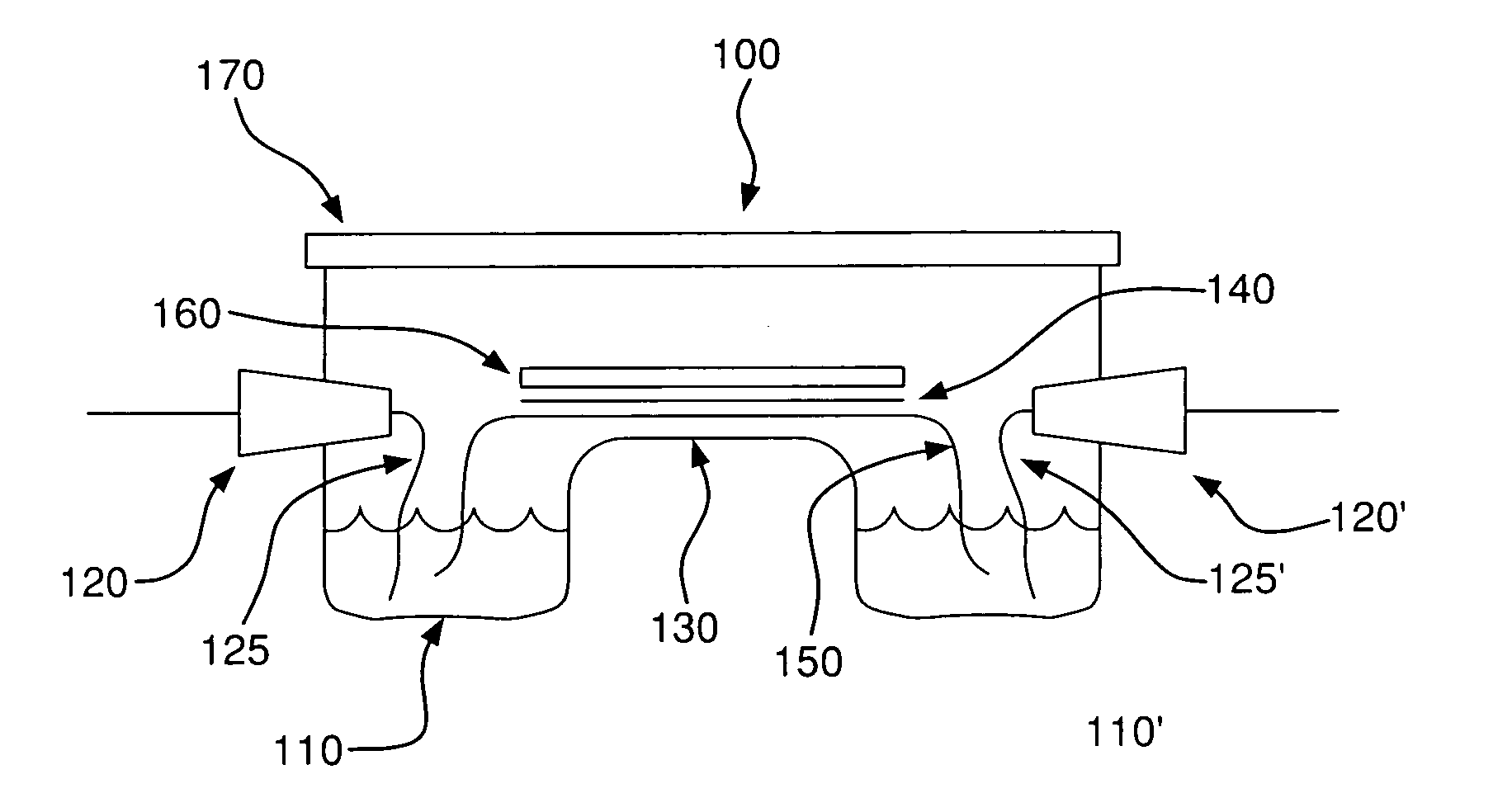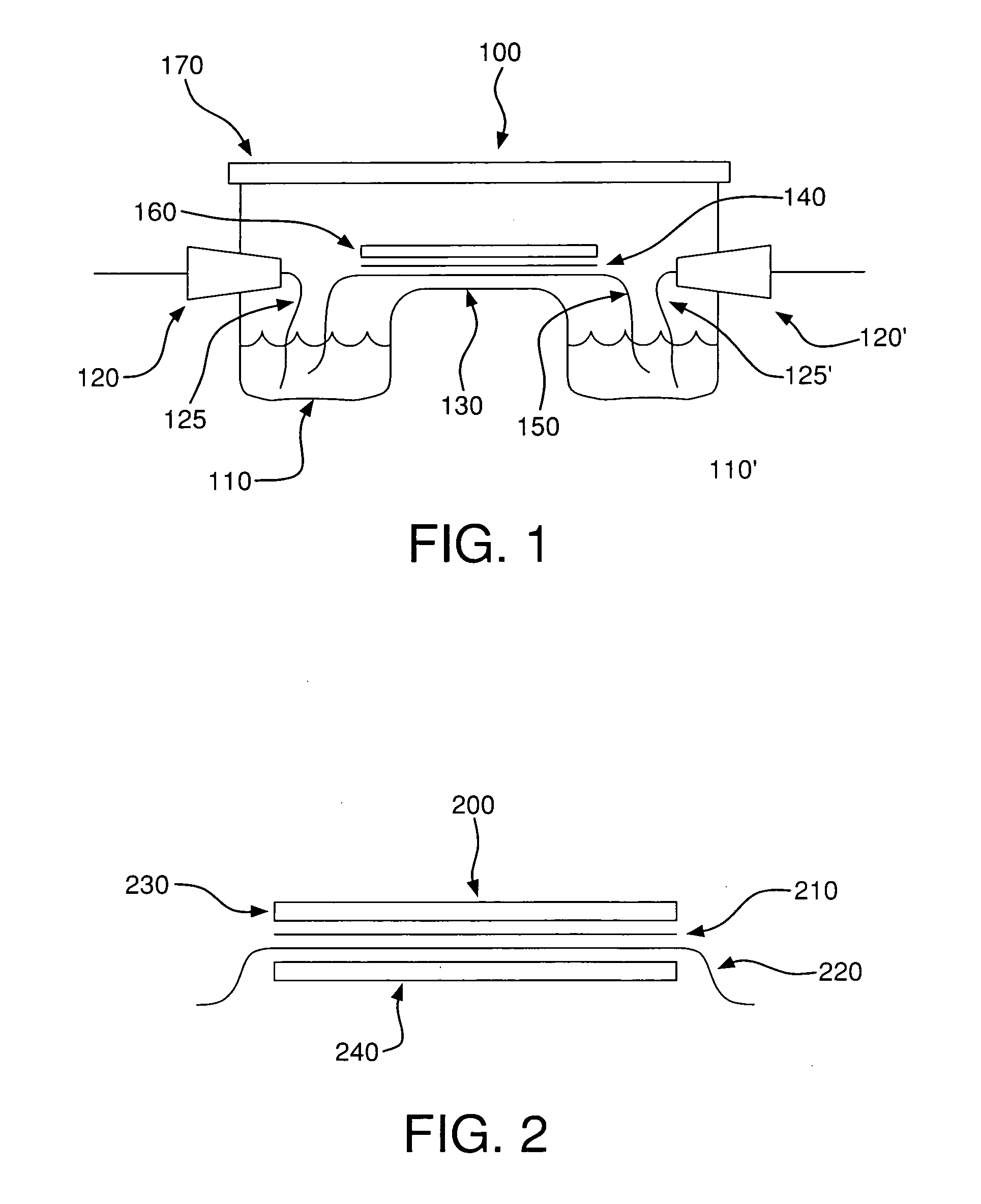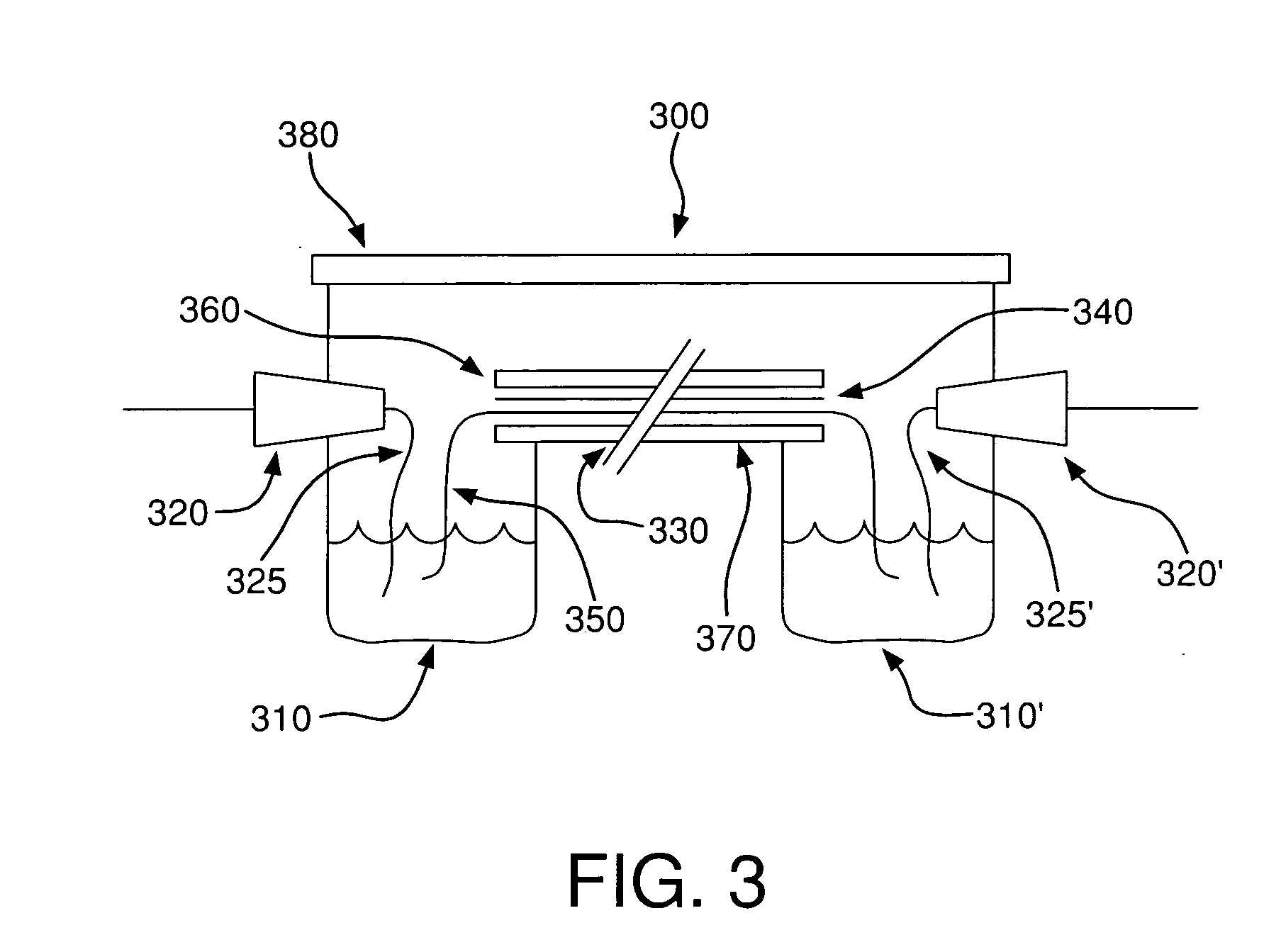Method for detecting disease markers
a technology for detecting disease markers and detecting methods, which is applied in the direction of fluid pressure measurement, liquid/fluent solid measurement, peptides, etc., can solve the problems of affecting the detection efficiency of specific disease markers. , to achieve the effect of minimizing heat generation during electrophoretic separation, low conductivity of organic solvent buffer, and easy separation
- Summary
- Abstract
- Description
- Claims
- Application Information
AI Technical Summary
Benefits of technology
Problems solved by technology
Method used
Image
Examples
example 1
Separation of Human Serum into Hydrophilic and Hydrophobic Fractions
[0141]To eliminate the crowding of protein complex spots, serum samples were separated into hydrophilic and hydrophobic fractions by using the detergent Triton X-114 before electrophoresis.
[0142]Methods: The Bordier procedure (Bordier, 1981, J. Biol. Chem. 256:1604-1607, the entire disclosure of which is herein incorporated by reference) for separation of membrane proteins was modified to separate human serum into hydrophilic and hydrophilic fractions. Specifically 5.0 μl of human serum from a normal (non-cancerous) subject were mixed with 150 μl of 10 mM Tris-HCl buffer (pH 8.0) containing 0.15 M NaCl and 1% Triton X-114 in an Eppendorf microfuge tube, and the mixture was placed on ice for 15 minutes. The mixture was then incubated in a 37° C. water bath for 30 minutes and spun at 1,000×g for 5 minutes in a microfuge. About 100 μl of the top layer (hydrophilic fraction) was removed and transferred to a new microfug...
example 2
Identification of Pancreatic Cancer Markers in the Hydrophobic Fraction of Serum
[0146]Hydrophobic serum fractions from eleven different subjects with pancreatic cancer were prepared as described above (Example 1) and subjected to two-dimensional membrane electrophoresis. The hydrophobic serum fraction of pancreatic cancer exhibited a unique separation profile compared to the hydrophobic serum fraction electrophoretic profile of normal subjects. For example, the data demonstrate that a cluster of about ten protein spots (or protein complexes) appeared in all samples from subjects with pancreatic cancer (FIGS. 5C and 5D), whereas in normal subjects only two of the ten proteins (or protein complexes) were present (FIGS. 5A and 5B). The data also show that other protein spots were unique to the samples from subjects with pancreatic cancer (FIGS. 5A-5D).
example 3
Analysis of the Nature of Pancreatic Cancer Markers
[0147]An experiment was performed to demonstrate that protein spots or clusters on a membrane electrophoresis separation profile can be expanded to help resolve individual protein components of the protein spots or clusters. An aliquot of the hydrophobic fraction of a serum sample from a subject with pancreatic cancer was spotted at the center of a PVDF membrane, as described in Example 1. An aliquot of the same hydrophobic serum fraction was also spotted at the upper right corner of a PVDF membrane, instead of in the middle of the membrane. Both aliquots were then subjected to two-dimensional membrane electrophoresis. The electrophoretic profile of FIG. 6B demonstrates that the spots in the cluster outlined in FIG. 6A, as well as spots adjacent to the cluster, were resolved into more easily identifiable spots by initiating electrophoresis of the sample in a different region of the membrane.
[0148]Seven pancreatic cancer-specific spo...
PUM
| Property | Measurement | Unit |
|---|---|---|
| width | aaaaa | aaaaa |
| width | aaaaa | aaaaa |
| thickness | aaaaa | aaaaa |
Abstract
Description
Claims
Application Information
 Login to View More
Login to View More - R&D
- Intellectual Property
- Life Sciences
- Materials
- Tech Scout
- Unparalleled Data Quality
- Higher Quality Content
- 60% Fewer Hallucinations
Browse by: Latest US Patents, China's latest patents, Technical Efficacy Thesaurus, Application Domain, Technology Topic, Popular Technical Reports.
© 2025 PatSnap. All rights reserved.Legal|Privacy policy|Modern Slavery Act Transparency Statement|Sitemap|About US| Contact US: help@patsnap.com



